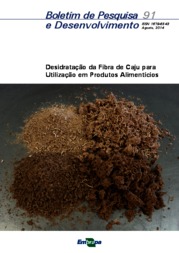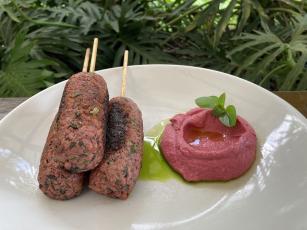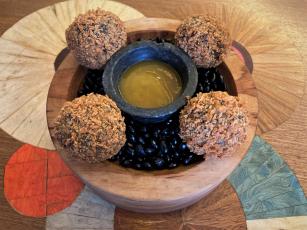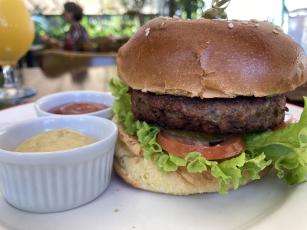Fibra desidratada de caju para utilização em produtos alimentícios
Dehydrated cashew fiber for use in food products
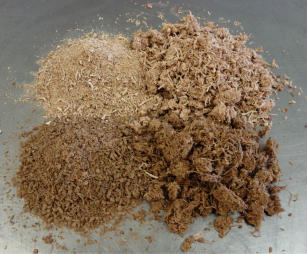
Photo: LIMA, Janice Ribeiro
The impact of two dehydration processes (dehydration in drying chambers with forced convection and freeze-drying), followed or not by grinding, on the characteristics of cashew fiber obtained from bagasse has been evaluated to obtain the dehydrated fiber that can be incorporated into food products. The instrumental texture, sensory differences and sensory acceptance of plant-based burgers prepared with rehydrated fibers were also evaluated. The yield of dehydration processes was on average 18%. Moisture decreased from 78% in wet fiber to less than 6% in all treatments, and final water activity was less than 0.40. The fibers dehydrated in drying chambers had darker and more reddish-colored fibers than the freeze-dried ones, and they had reduced water and oil absorption capacities, but the grinding had little influence on such characteristics. Rehydrating the fibers dehydrated in drying chambers produced hamburgers with a more cohesive and tougher structure. With the exception of the hamburger produced with the freeze-dried fiber, all the others were perceived by the sensory tasters as different from the hamburger produced with the moist fiber, considered a control sample. However, the hamburgers made with all of the treatments were well accepted by the tasters.
Where to find:
Embrapa Agroindústria Tropical
Rua Dra. Sara Mesquita, 2270 – Bairro Pici
CEP 60511-110
Fortaleza - Ceará
Telefone: (85) 3391-7100
Fax: (85) 3391-7109
E-mail: https://www.embrapa.br/fale-conosco/sac/
https://www.embrapa.br/agroindustria-tropical
Process: To obtain processed food (agroindustry) Launch year: 2014
Country: Brazil Region: Northeast State: Ceará, Bahia, Piauí, Rio Grande do Norte Biome: Caatinga
Responsible Unit: Embrapa Tropical Agroindustry
Keywords: Caju, pedúnculo, fibra, desidratação, produto alimentício, hambúrguer, insumo, agregação de valor

